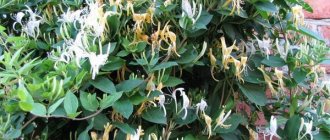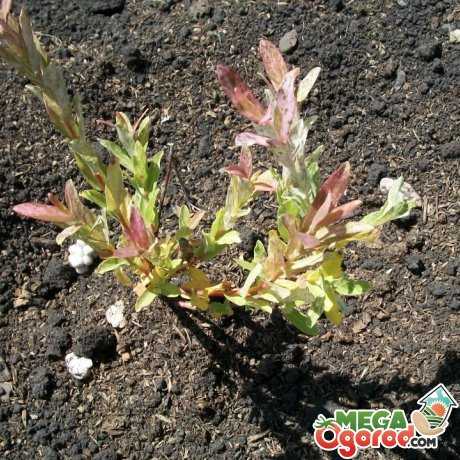
For planting whole-leaved willow, as well as for all other species, you need to choose a place with sufficiently moist soil for good and rapid development of the seedling.
The planting site should also be well lit, which is especially important for varieties with colored leaves. In the shade, they will lose their decorative color and become just green, and the shoots will stretch out, and the tree or bush will lose its attractive crown shape, which will become sloppy and sparse.
The best time for planting whole-leaved willow is spring, late April - May.
For this, planting pits are prepared, in which humus or other organic fertilizers are laid, excluding fresh manure. Be sure to make drainage from sand or broken bricks.
If the soil is heavy, then before returning it to the planting hole, it is mixed with peat, sand or humus. In order for the seedling to take root well and start growing within a few weeks after planting, it must be watered abundantly, you can even cover the near-trunk circle with grass or, for less moisture evaporation.
Whole-leaved willow propagates vegetatively, mainly with the help. For this:
- Young branches are taken before the beginning and opening of leaves, around April, in the southern regions it is possible even earlier.
- Rooting takes place either in the ground or simply in a container with water. With both methods, the roots appear quickly enough, within 2-3 weeks.
- After the white roots that appear have reached a size of 2-3 cm, they can be planted in a permanent place or in a separate bed for growing.
- A seedling grown from a cuttings will reach its maximum size and bloom in about 3-4 years.
Willow care is not difficult at all, it consists in carrying out the following activities:
- one of the most important measures for caring for whole-leaved willow, especially if it is planted in an insufficiently moist place. Young plants are watered regularly throughout the summer; if there is a drought, older plants can be watered less frequently, but more abundantly. If the weather is hot and dry, then you can sprinkle the crown, but not in the bright sun, so as not to burn the leaves. In the heat, willows feel very good near water bodies, where the air is still more humid. When planting, give preference to damp places, as the whole-leafed willow can withstand short-term flooding better than constant drought.
- ... Whole-leaved willow, like all its relatives, tolerates pruning well. Early spring pruning has a good effect on the formation of a bush, which becomes denser. Formative pruning can be carried out throughout the summer, especially for standard species in which the crown is maintained in a certain shape. The fact is that some varieties of whole-leaved willow give a large seasonal increase, reaching 30 cm per year, and if we neglect regular pruning, then by the end of the season the crown will be overgrown. In addition to losing its aesthetic appearance, it also threatens to damage it during heavy snowfalls in winter. Sanitary pruning is done in the spring. It consists in removing all frozen and damaged branches.
- Top dressing is carried out 1-2 times per season organic or, on fertile soils, top dressing can be reduced to once.
- The trunk circle is cleaned of and loosened, you can also use, or plant undersized plants that will protect the soil from excessive drying out.
- ... Although the whole-leaved willow is quite resistant to frost, nevertheless, in the most frosty winters, it can freeze to the level of snow cover. Therefore, young plants in the first years of life can be covered with any breathable material, or covered with leaves and sawdust. With standard forms, they sometimes do the same as with standard roses, in several steps they tilt to the ground and cover.
It is also worth paying attention so that the willow planting site is not in a place open to northern winds, which are more terrible for it than frosts, since the young branches completely dry out.
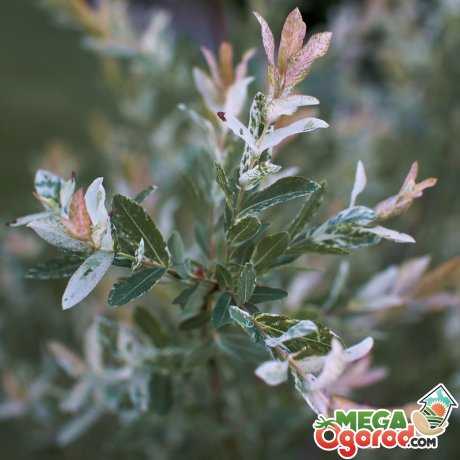

Willow tse
Weeping willow species
In nature, there are more than 600 species of willows. They grow everywhere, even in the tundra and the Arctic.
Weeping willow grows up to 25-30 meters and can live up to 100 years. The trunk of the tree is powerful, covered with gray bark. Crohn's - wide, spreading. The leaves have a dark green tint, on the underside they are lighter and seem to be covered with a whitish downy.
Weeping willow species are striking in their magnificence and variety. Here are just the most popular ones:
- White willow. The highest (its height is 25-27 meters) and unpretentious view. Named so in connection with the silvery color of the leaves. It tolerates frost well and can grow in shaded areas. Looks great among trees with dark green foliage and will serve as the perfect backdrop for red-leaved trees.
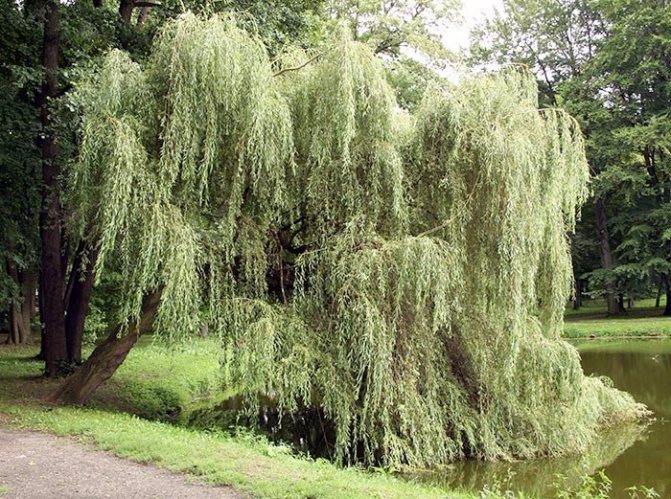

- Goat willow (delirious). In spring, when flowering, fluffy flowers bloom on the shoots of this species, and the goat willow looks like a huge dandelion. Such a weeping willow is planted in a summer cottage in group plantings, although it looks more effective in combination with plants of excellent foliage color.
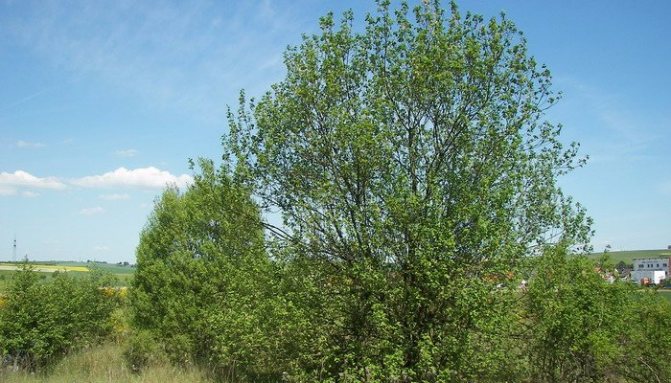

- Rod-shaped willow. A large tree (up to 8 meters) with a lot of branches. When flowering, small cylindrical catkins (up to 6 cm) form on the branches, and the shrub becomes fluffy during this period.
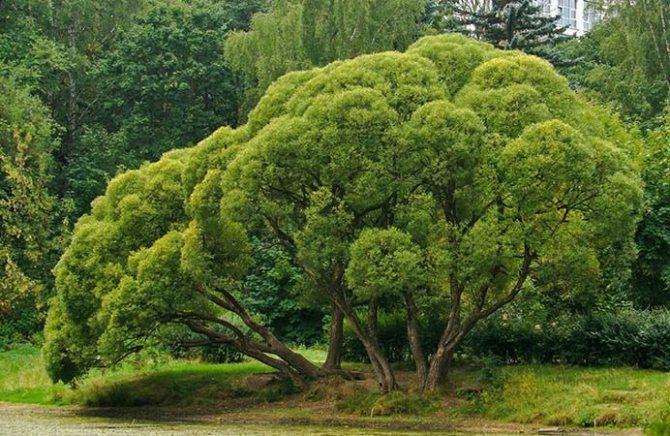

- The willow is the most graceful. It differs from other willows with shiny brown stems. This type of weeping willow is appreciated for the good rooting of the cuttings and for how quickly it grows (it takes no more than 2 years to grow).
- Willow of Babylon. The tree grows no more than 15 meters in height with a crown up to 9 meters in diameter. It grows quickly, looks effective in group plantings near water bodies.


Selection of seedlings for planting
In natural conditions, willow can multiply seeds, and in culture, weeping willows multiply cuttings or obtaining a seedling.
First of all, seedlings choose winter stems, with good mature wood. It is desirable that the age of the young is one to two years and they were harvested either in early spring or late autumn.
Before bud break, the seedlings are placed in wet sand or in a container with water.
Did you know? Willow appeared on the earth long ago - its remains are found already in the Cretaceous period, and some modern species (ash, white, rod-shaped) grew back in the Quaternary era.
Willow planting site
Weeping willow should be planted in light, sandy, medium loamy soils. The site should be open, well-lit, sunny, with light partial shade.
In addition, in the area where willow is to be grown, the groundwater should be close to the surface. If you have a place on your site that is constantly drowning as a result of melting snow, then it is this place that is comfortable for the willow.
Important! Weeping willows do not grow in full shade. Even under natural conditions, willows are not found in the wilderness.
Rules for planting willow seedlings
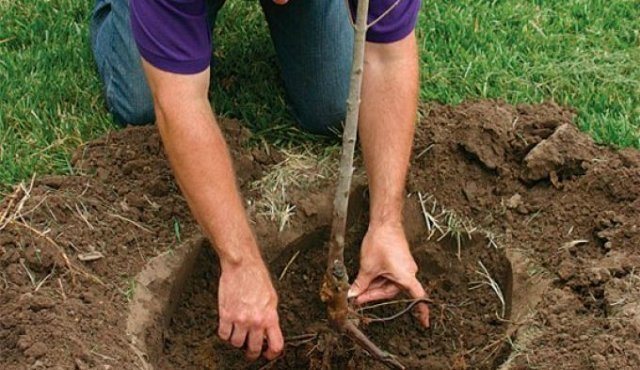

The seedlings are placed in the ground to such a depth that several buds remain on the surface.Before planting weeping willow, dig a hole 60 cm in diameter for tree species and 50 cm for bushes. The depth of the hole should be 40 cm. If the seedling has a closed root system, the hole should correspond to the diameter of the earthen coma. In the case when the willow is planned to be planted in the form of a hedge, then they dig a trench 40 cm deep and 40-50 cm wide.
Did you know? In folk art, willow is associated with sadness and at the same time is a symbol of beauty.
Drainage is required for heavy clay soils. To do this, sand or crushed stone is poured into the bottom of the planting hole in a layer of 20-30 cm.
In order for the weeping willow to take root better, you need to prepare a nutrient mixture from earth, peat and compost, taken in equal proportions. You can add 200 g of azofoska to such a mixture. The planting hole is filled with this composition by 1/3 and the seedling is placed.
Then the ground around the seedling is tamped in such a way that a pit for irrigation is formed around. At the end of planting, 2 buckets of water are poured under each seedling.
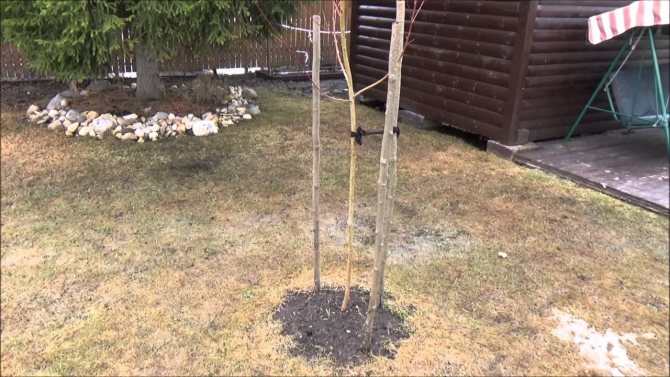

If the timing of willow cuttings fell on the autumn period, the soil should be covered with straw or dry leaves, and the seedlings themselves should be covered with spruce branches.
If the stalk is tall, for the first time, to fix the vertical position, a support peg is installed next to it.
Did you know? Willow in different regions is called differently: willow, vine, blackotal, willow, willow, bredina, lozina, rakita.
Reproduction
The sinuous willow is beautifully cuttings. It is enough to stick its twig (no need to take the thinnest tips) in a shady place of the site and do not forget to water. It is better to root with short cuttings. The roots give cuttings not only in the ground, but also in the water.
It is believed that the willow drives out evil spirits and protects from bad people. Is this so, everyone decides for himself. But regarding the decorativeness of winding willows, the opinion is unambiguous: they are spectacular and decorate any site.
Willows reproduce well by cuttings. From May to the end of July, cuttings can be cut and planted in ridges in a shaded area. With the obligatory abundant watering, the cuttings develop roots. Both willows are beautiful in solitary planting, framed by ornamental shrubs with beautiful foliage.
Interesting site materials
- Schisandra chinensis: cultivation techniques, useful properties
- How to properly grow gatsania from seeds at home
- Living paintings
How to care for a weeping willow
In order for the willow to grow quickly and look graceful, you need to know the intricacies of growing and caring for these plants. More attention should be paid to caring for the weeping willow in the first time after planting.
Watering
Since willow is a moisture-loving plant, it needs frequent watering and regular spraying.
In the early years, young trees grow quickly, giving an increase of up to 3 meters per year. Therefore, during this period, they need to be watered with 2-5 buckets per unit (the tree will absorb as much as it needs). Water the willow either early in the morning or in the evening after sunset.
Water must be poured not only at the root, but also on the crown.
Did you know? Willow bark has long been used as an antipyretic and anti-inflammatory agent, and salicylic acid gets its name from the Latin salix - willow.
Top dressing
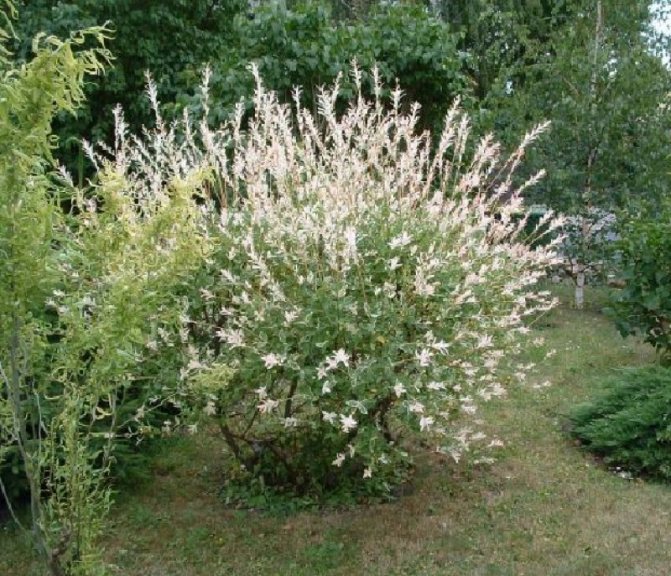

After planting a tree in your area, think about how to apply top dressing, since it is hardly possible to grow a lush and healthy weeping willow without them. Top dressing must be done in spring or autumn, while digging the trunk circle.
Any fertilizers (mineral and organic) are suitable for weeping willows. Their introduction throughout the season guarantees the health of the plant and a gorgeous look. In spring and summer, complex fertilizing is introduced, and in August - superphosphate and potassium sulfate. The amount of fertilizer depends on the age of the plant.
In the spring, it is advisable to loosen the soil near the tree and add mineral fertilizing. In the fall, fallen leaves, wild growth are removed from the site, and varieties that are not resistant to frost are covered in October-November.
Important! Do not leave fallen leaves under the willow - they contain tannins that have an undesirable effect on plant growth.
Haircut and crown shaping
If the weeping willow is not cut off in time, then the natural formation of the crown will occur - the branches will grow chaotically, and the tree will lose its decorative effect. therefore a haircut is a mandatory procedure. After pruning, you can get willows of extraordinary shapes and beauty.
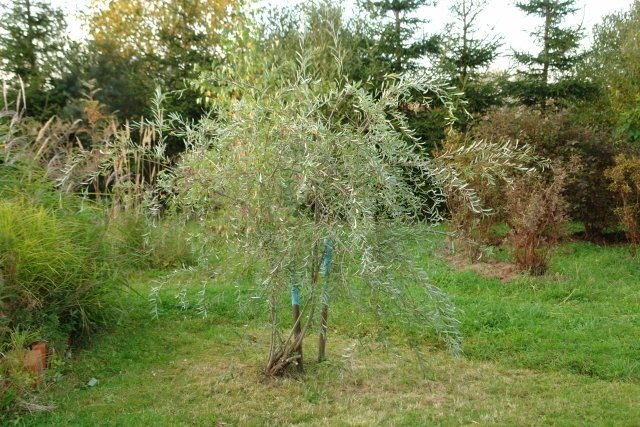

In the first years of life (up to 5 years), the plant does not need a haircut. The willow is gaining strength, getting stronger, growing and developing. When the branches have grown by a meter, it is worth starting the first pruning.
Mostly, willow is trimmed in spring, but you can do this procedure in summer as well. The ends of the branches are shortened by 30-35 cm. The cut is performed directly above the bud directed upward.
Important! Willow should not be pruned during flowering.
Regular pruning of weeping willow branches will allow 5-6 years after planting to form a luxurious tree with a gorgeous crown.
Application in landscape design
Willow shoots of unusual shape are often used in their work by florists and ikebana creators. This pliable and flexible material is an indispensable element in flower arrangements. Due to its peculiarity, flexible shoots are also used in weaving. Masters of their craft skillfully transform ordinary willow rods into vases, stands, dishes, boxes and other wicker interior items.
Most of all, this exotic plant is in demand and popular in landscape design. Summer cottages, gardens near the house, resting places where a weeping willow or other decorative forms of the Sverdlovsk winding willow are planted have a more harmonious and complete image, the impression of complete unity of man with nature is created.


Weeping willow in landscape design is also used as a material for the construction of arbors, living arches and hedges, tunnels and other architectural "structures". Branches of willows planted near various structures are periodically tied to them as they grow, and after a while a natural natural structure and an ideal resting place are formed. This ornamental plant looks great in a single planting and in a landscape gardening composition.
Dangerous diseases and common pests of willow trees
When growing weeping willow, special attention should be paid to pests and diseases that can affect this beauty. So, most often, willows can be threatened by:
- leaf beetles;
- caterpillars;
- spider mite;
- elephants;
- flies;
- aphid;
- murine rodents.
Plant parasites such as dodder and bindweed are no less dangerous for willow.
Of the most common willow diseases, it is necessary to highlight:
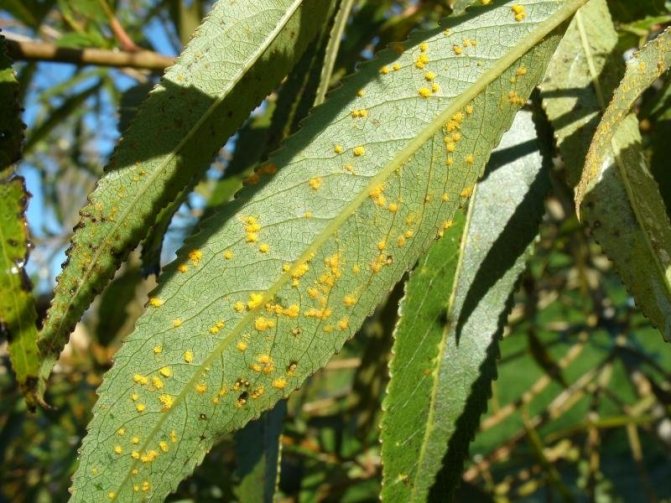

- powdery mildew;
- rust;
- necrosis;
- spotting;
- scab.
These diseases appear as a result of high humidity, which occurs due to rainy weather. To combat them, weeping willow is treated with fungicides in spring and autumn (for prevention) and at the first detection of signs of the disease.
Moreover, the bark and branches should be regularly examined for the appearance of necrotic signs, in order to take timely measures to prevent the development of the disease. The affected branches are cut to a healthy area, and the cut sites are processed.
Important! Try to protect the willow bark from mechanical damage - disease vectors penetrate through them.
From necrosis, the preventive treatment of willow is carried out in August or May, the next season.
If grayish spots appear on the leaves of the willow, the plant must be treated with copper-containing preparations.
How to refine your garden with globular willow trees?
If you want to see tall hedges in your garden, willows should be planted 1.5-2 m apart. Planting in two rows will create a shady alley that looks great, especially if it's made of white weeping willow. In order for the alley to look as spectacular as possible, the crowns of the trees are closed. For 2-3 years of cultivation, the branches are intertwined at a height of 2.5-3 m or the ablation method is used. Ablactation is a special method of grafting trees, used to connect the shoots of one or more plants, which does not require cutting.
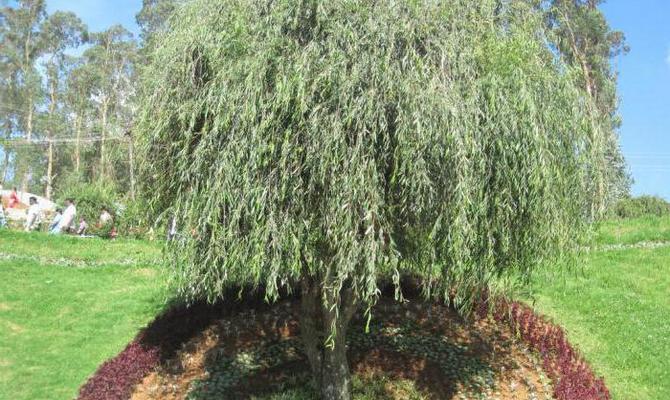

Spherical willow on the site
However, this method requires some skill. So if you are not quite an experienced gardener yet, it is best to braid the branches, securing the two tops with elastic tape. This closing of the branches allows you to make a rounded green tunnel with openwork edges. And if your garden is small, then it is better to stop at the green arch at the entrance, for which you only need two willows. Such picturesque corners in the garden are complemented by a small flowing stream or fountain. However, lonely willow branches on a wide lawn will also look very impressive, especially if decorative Konik fir trees are planted next to them for contrast.













